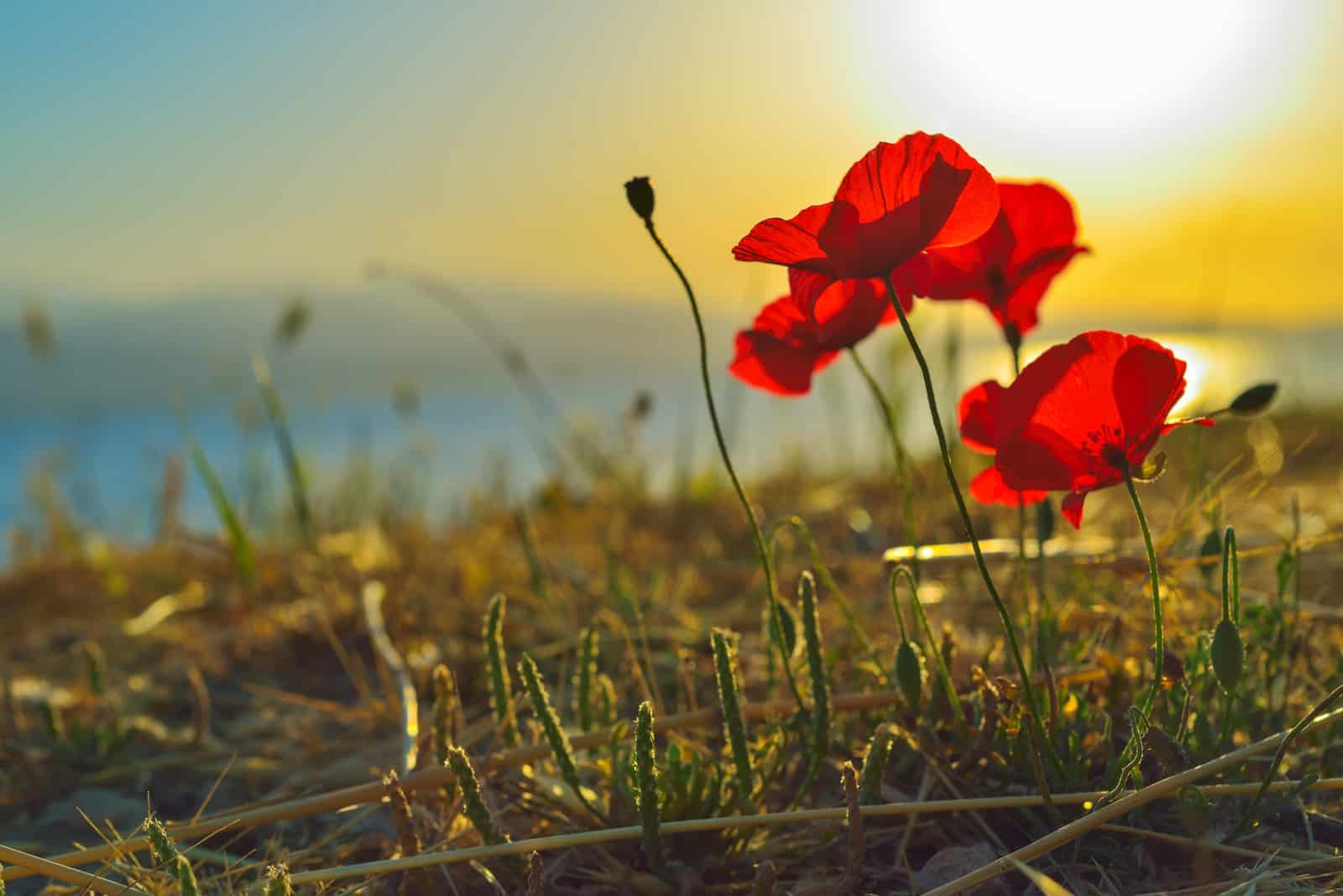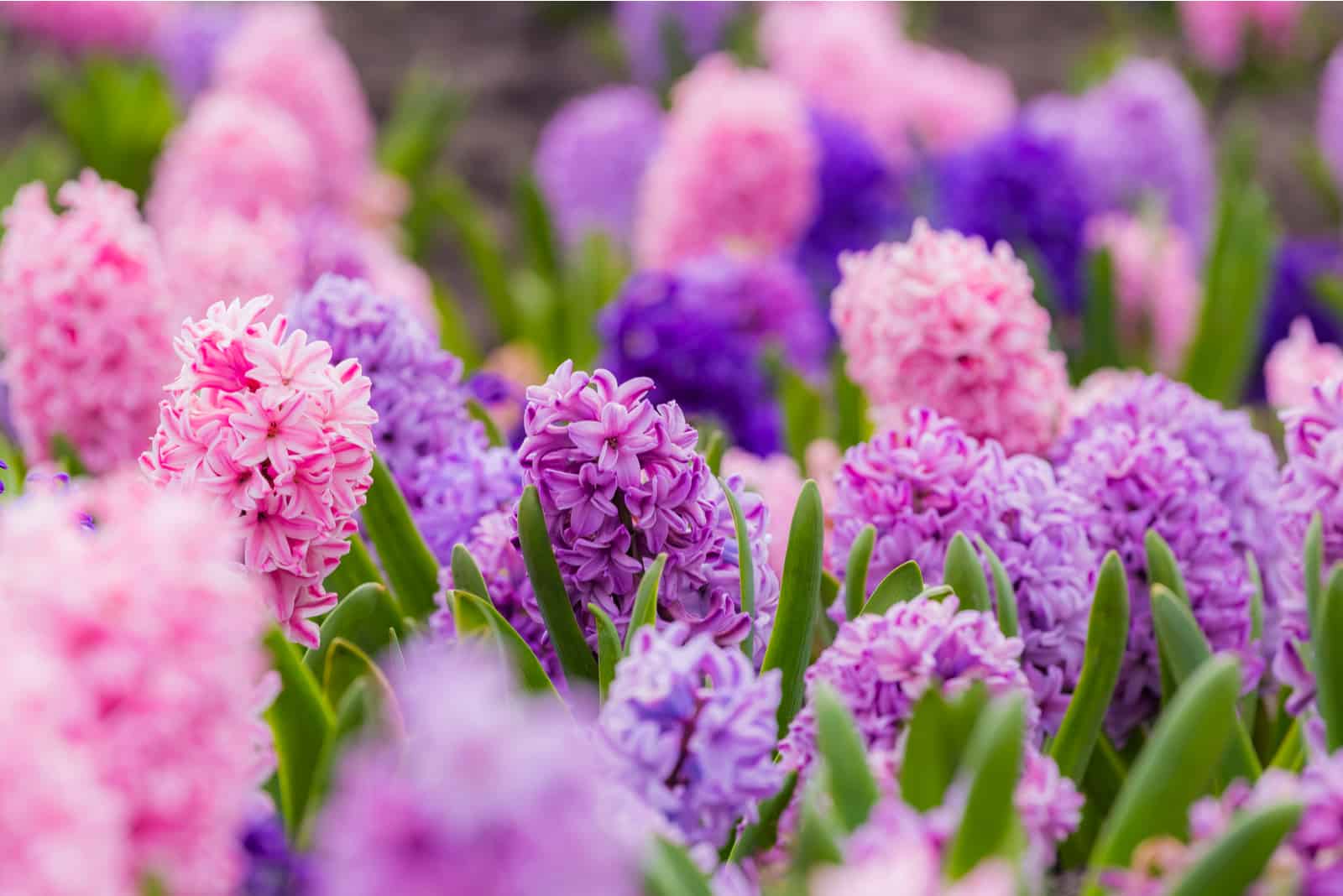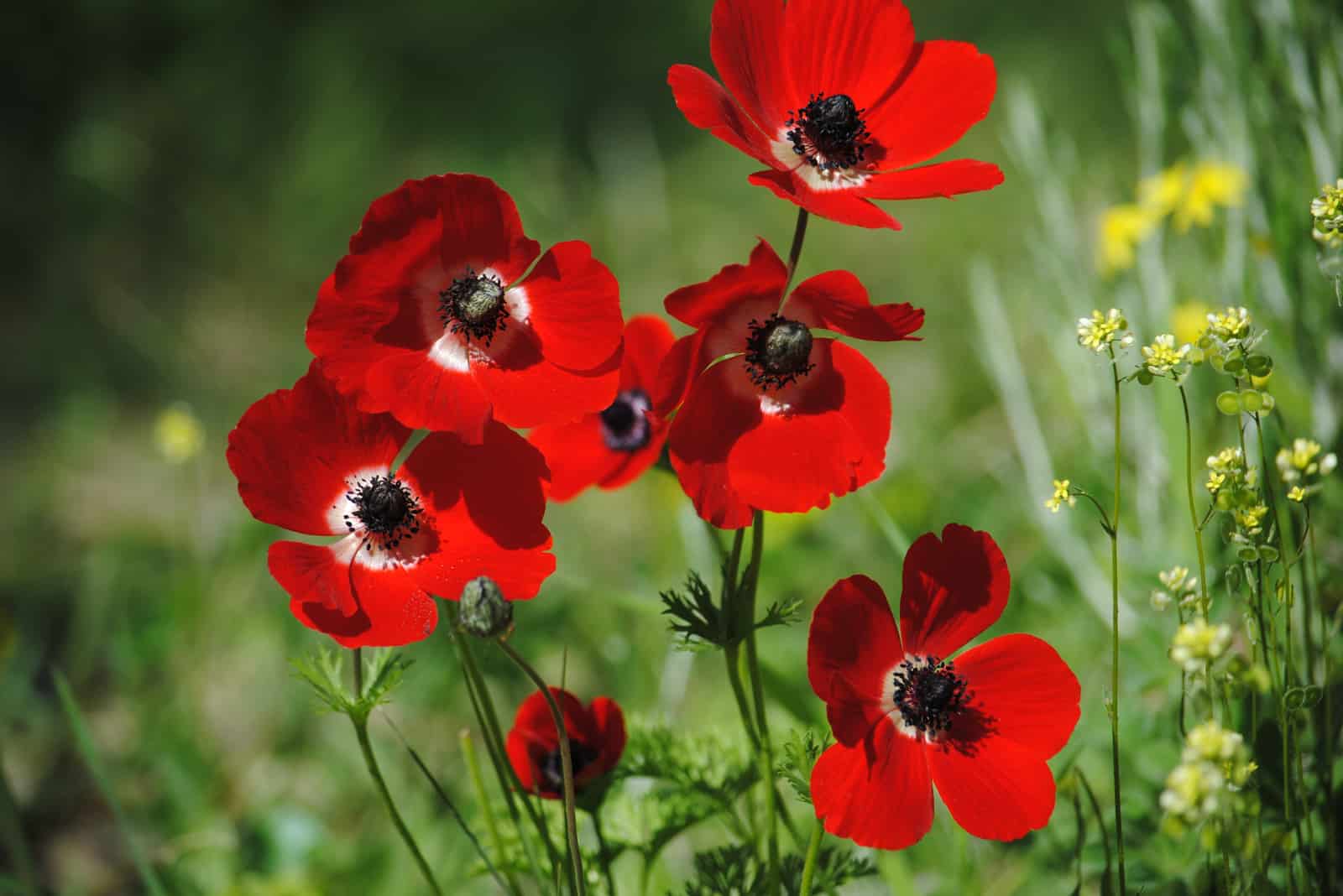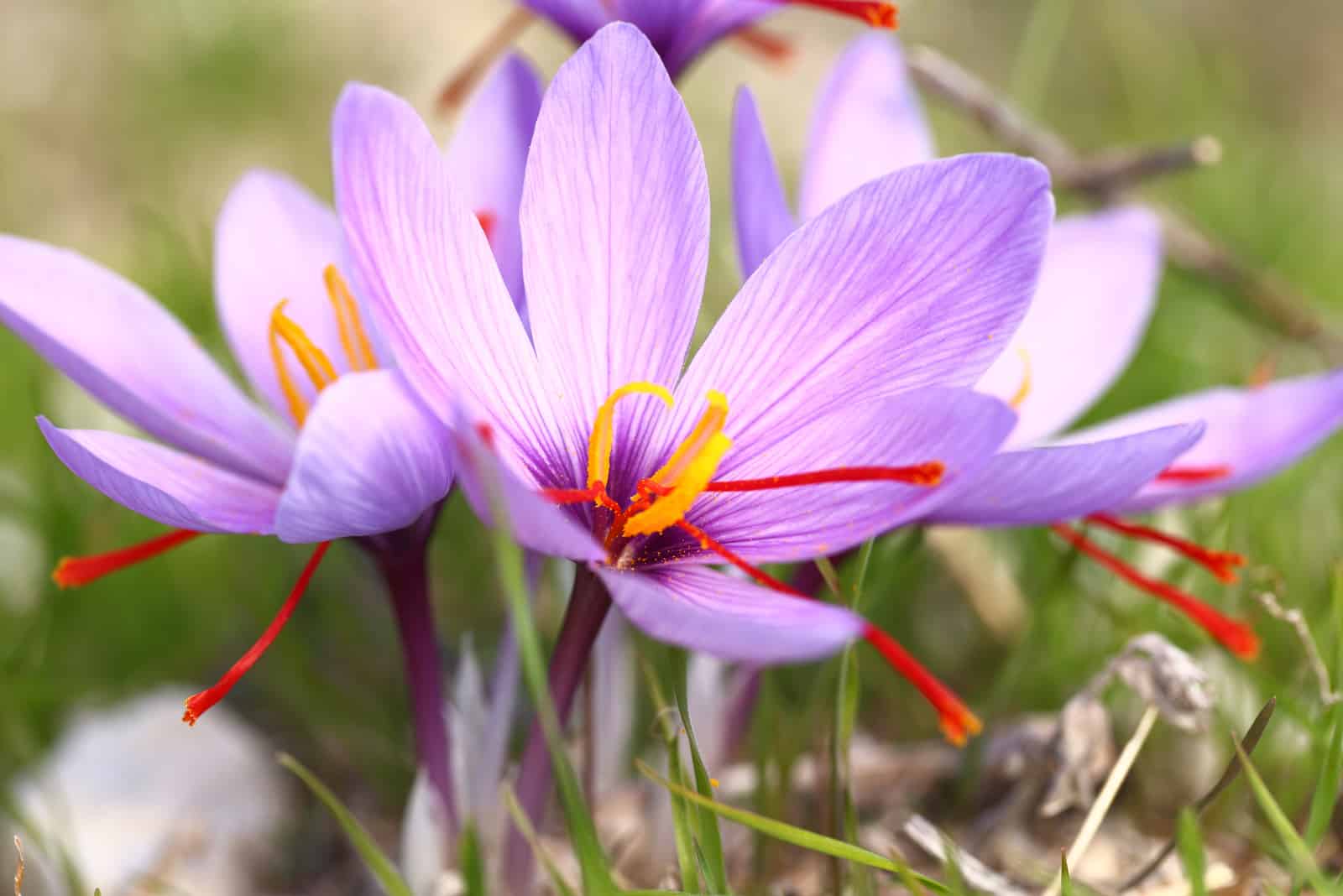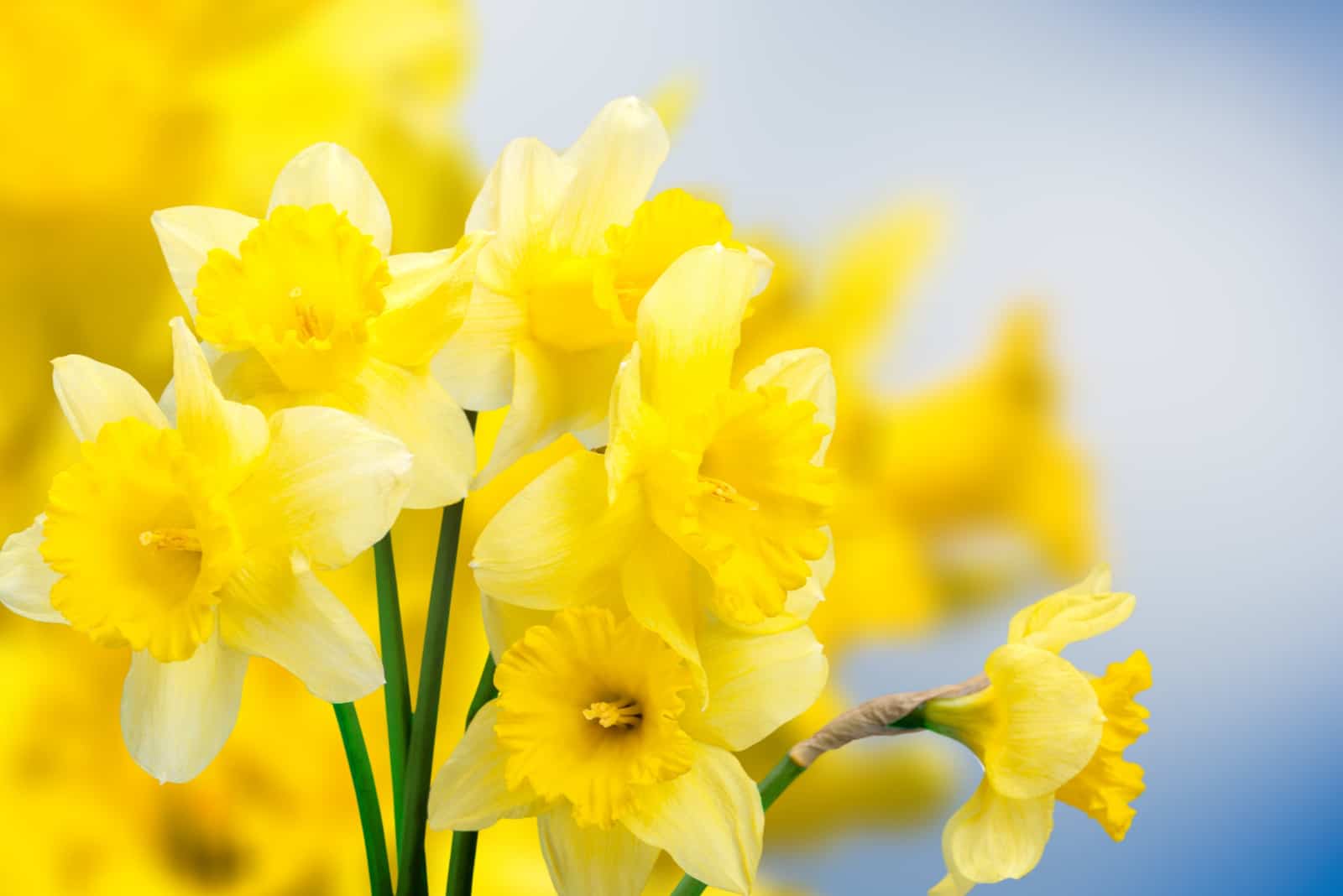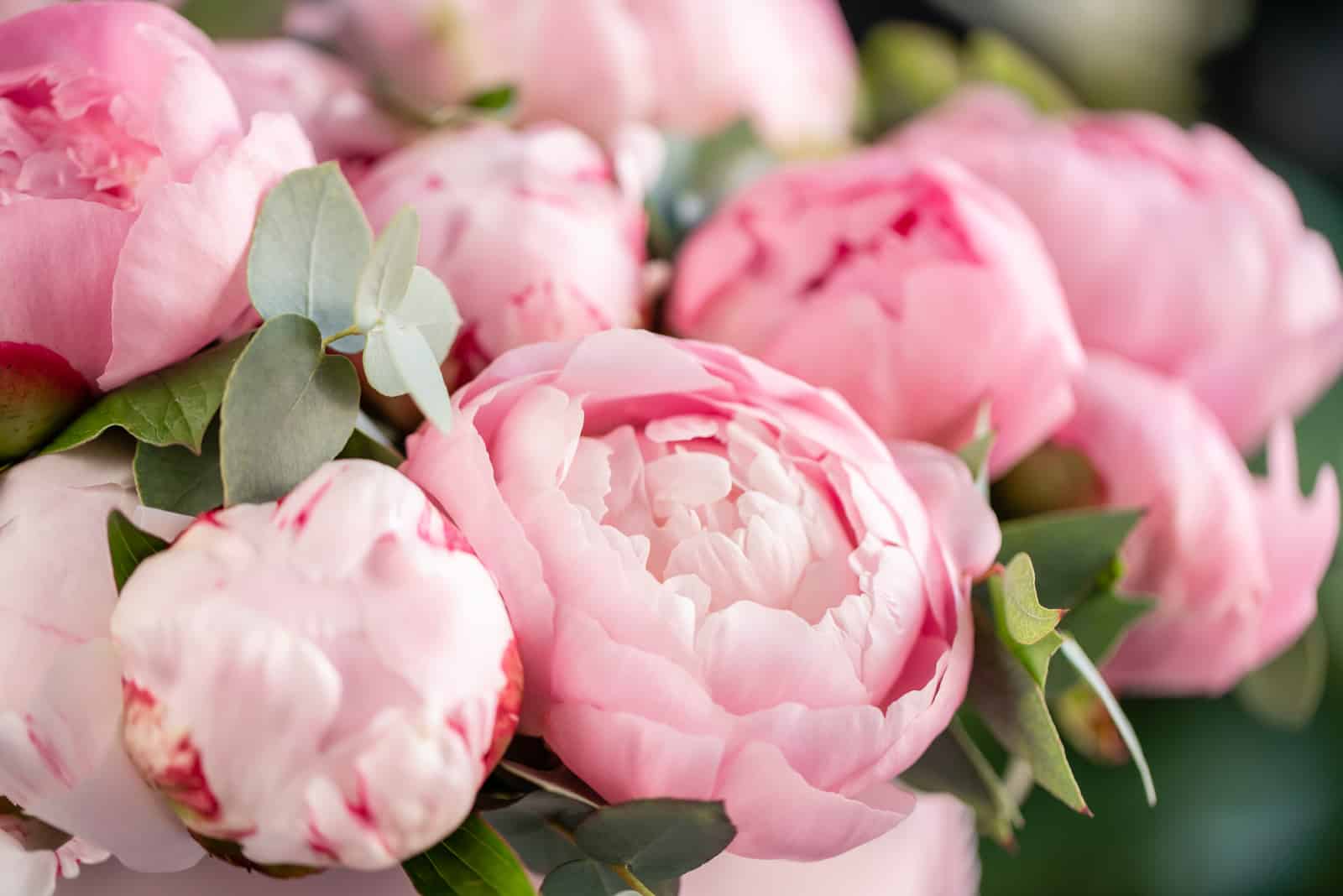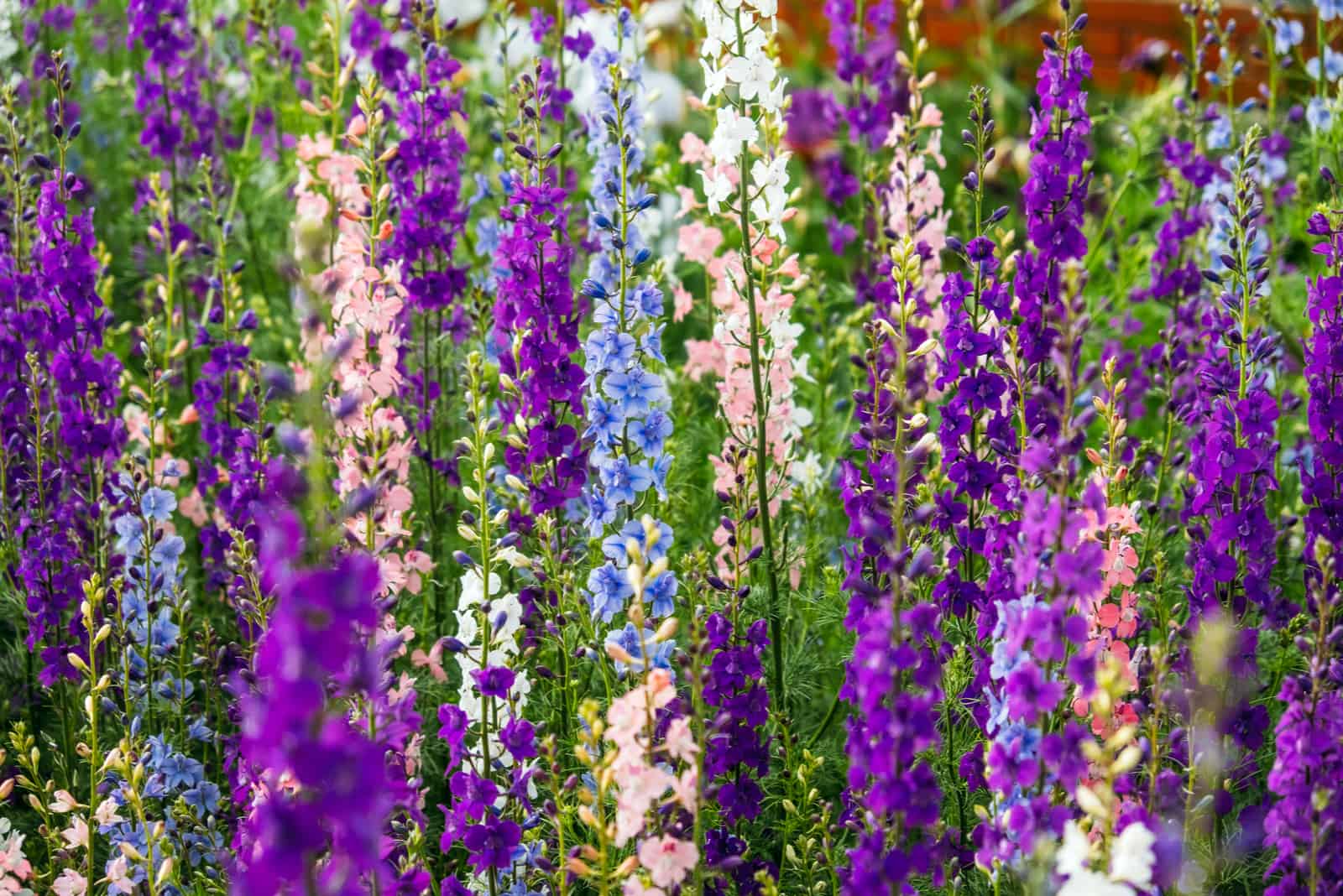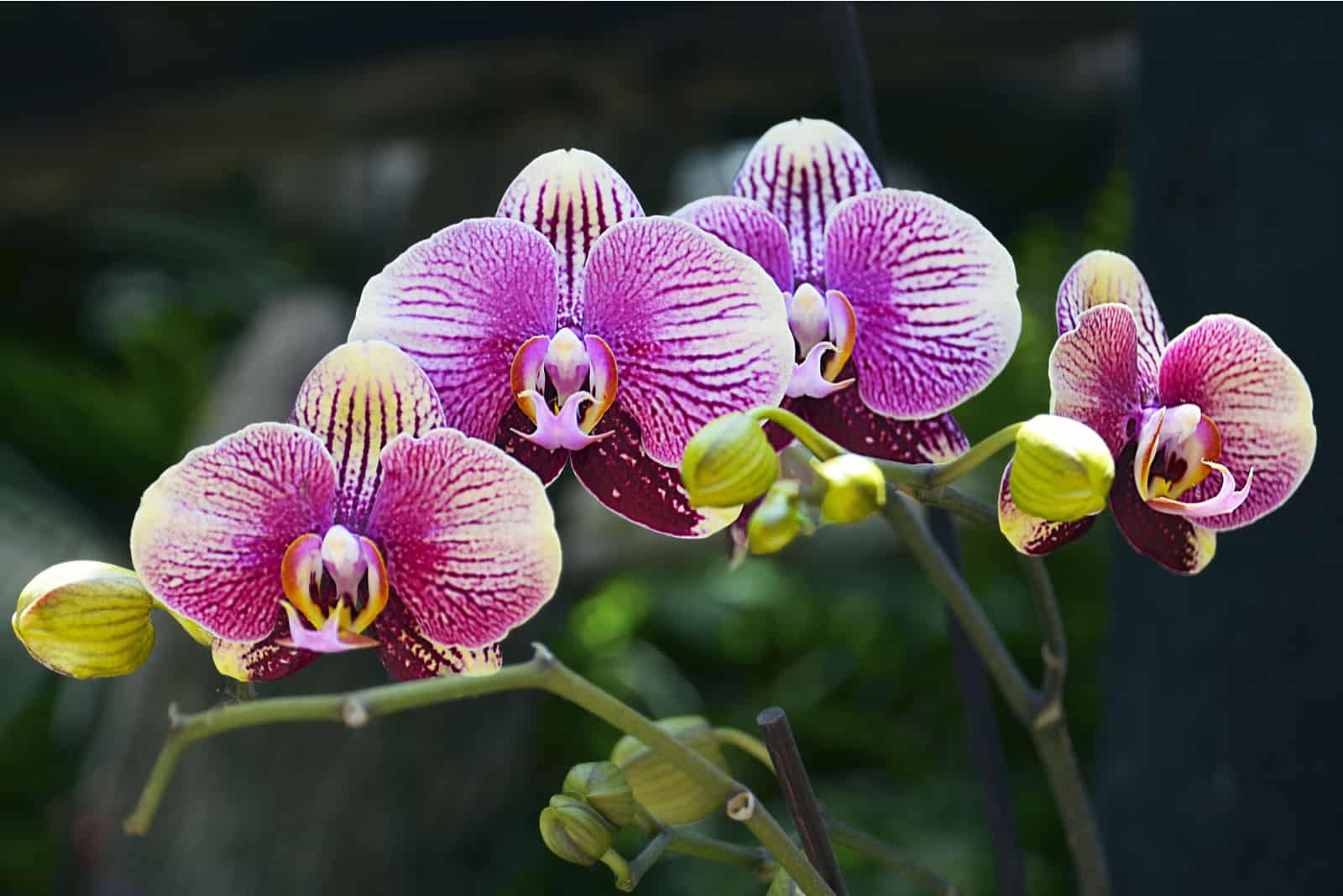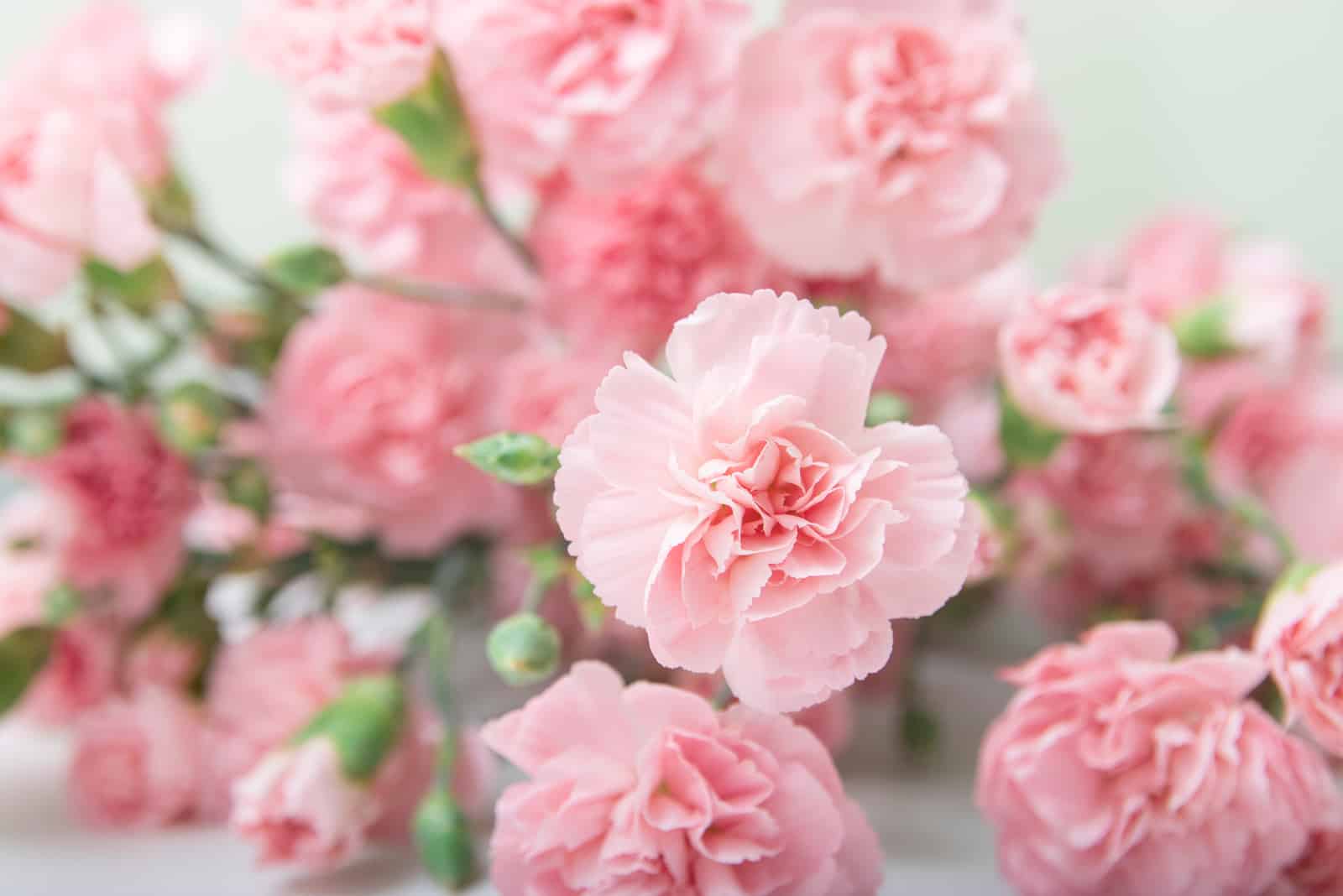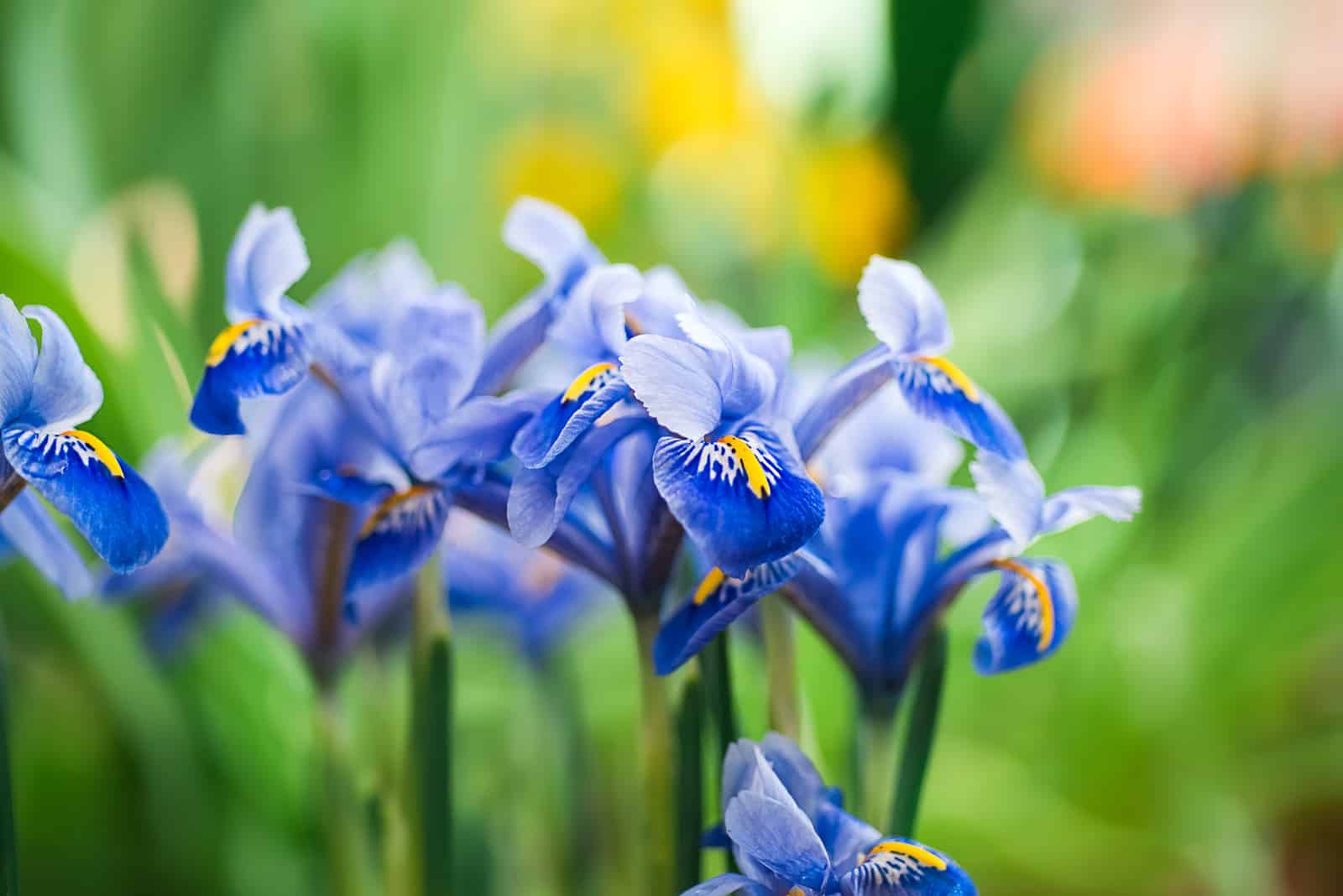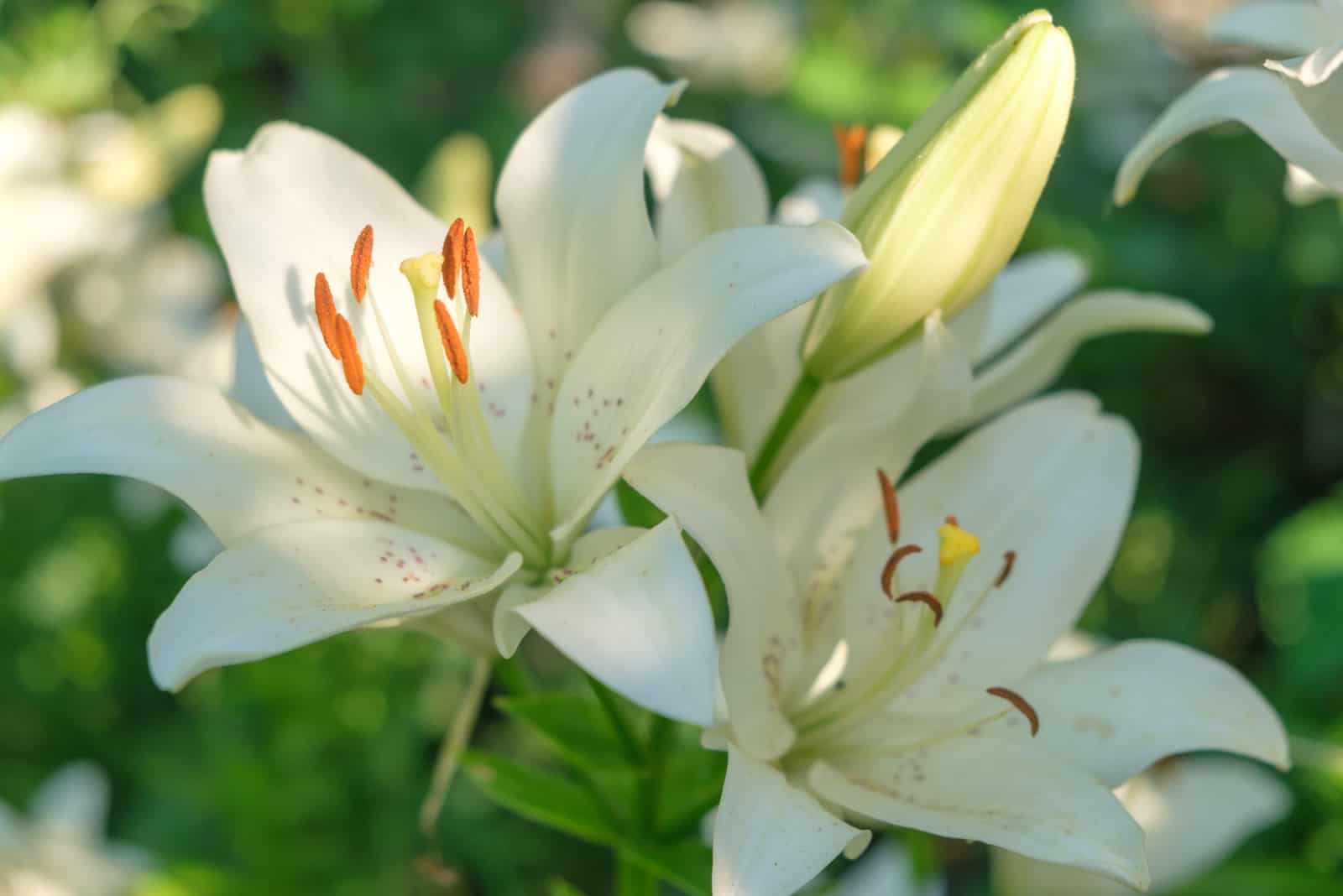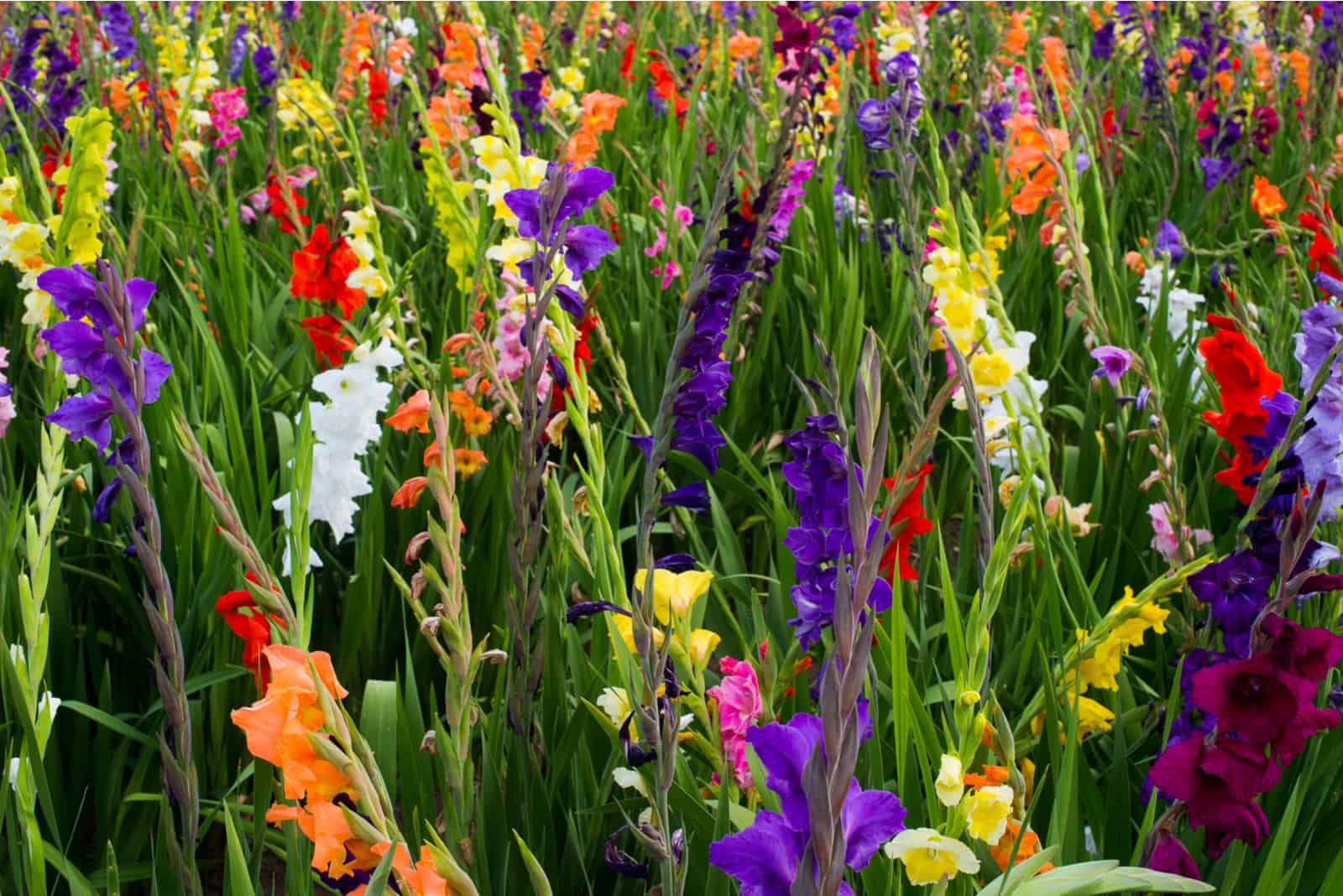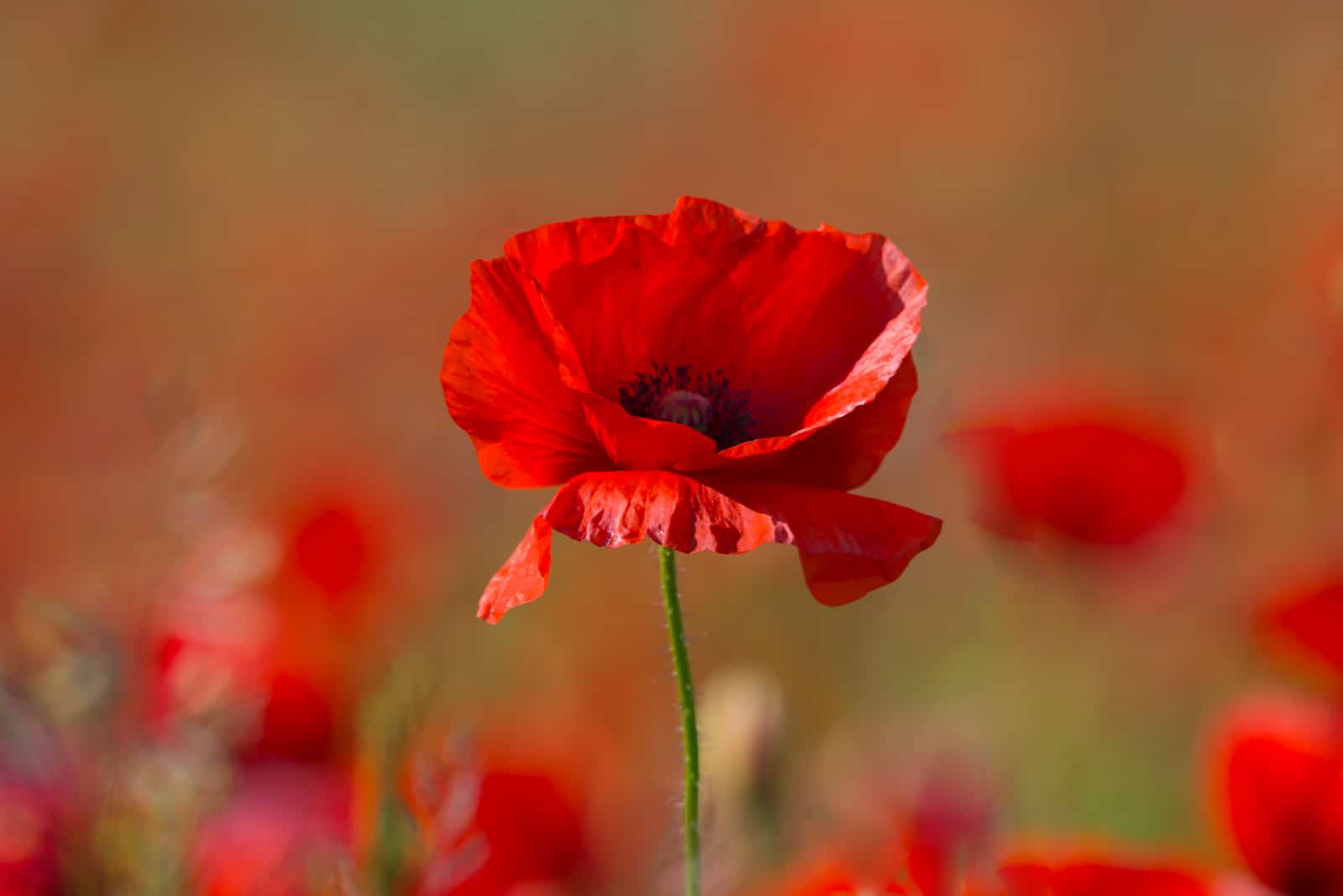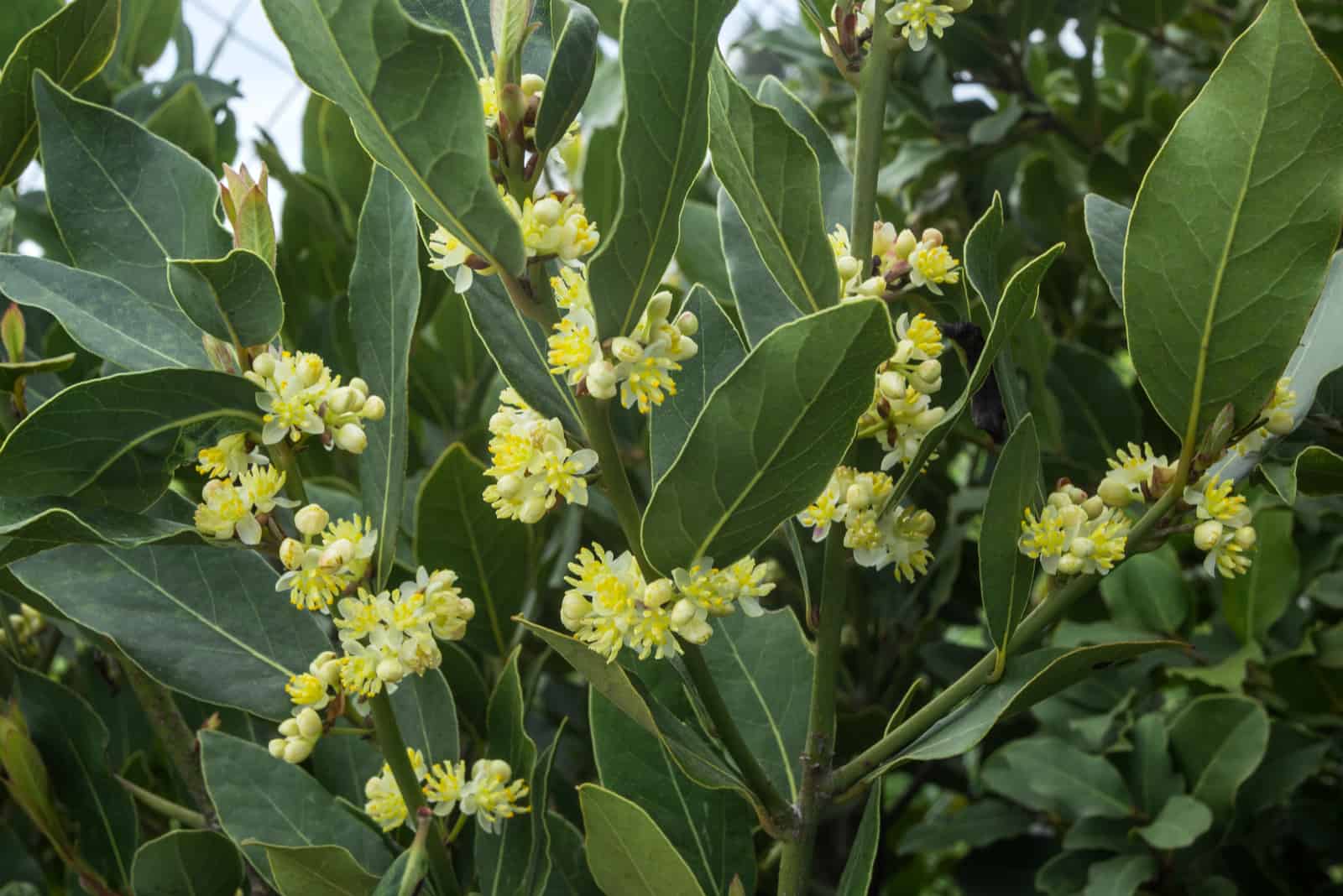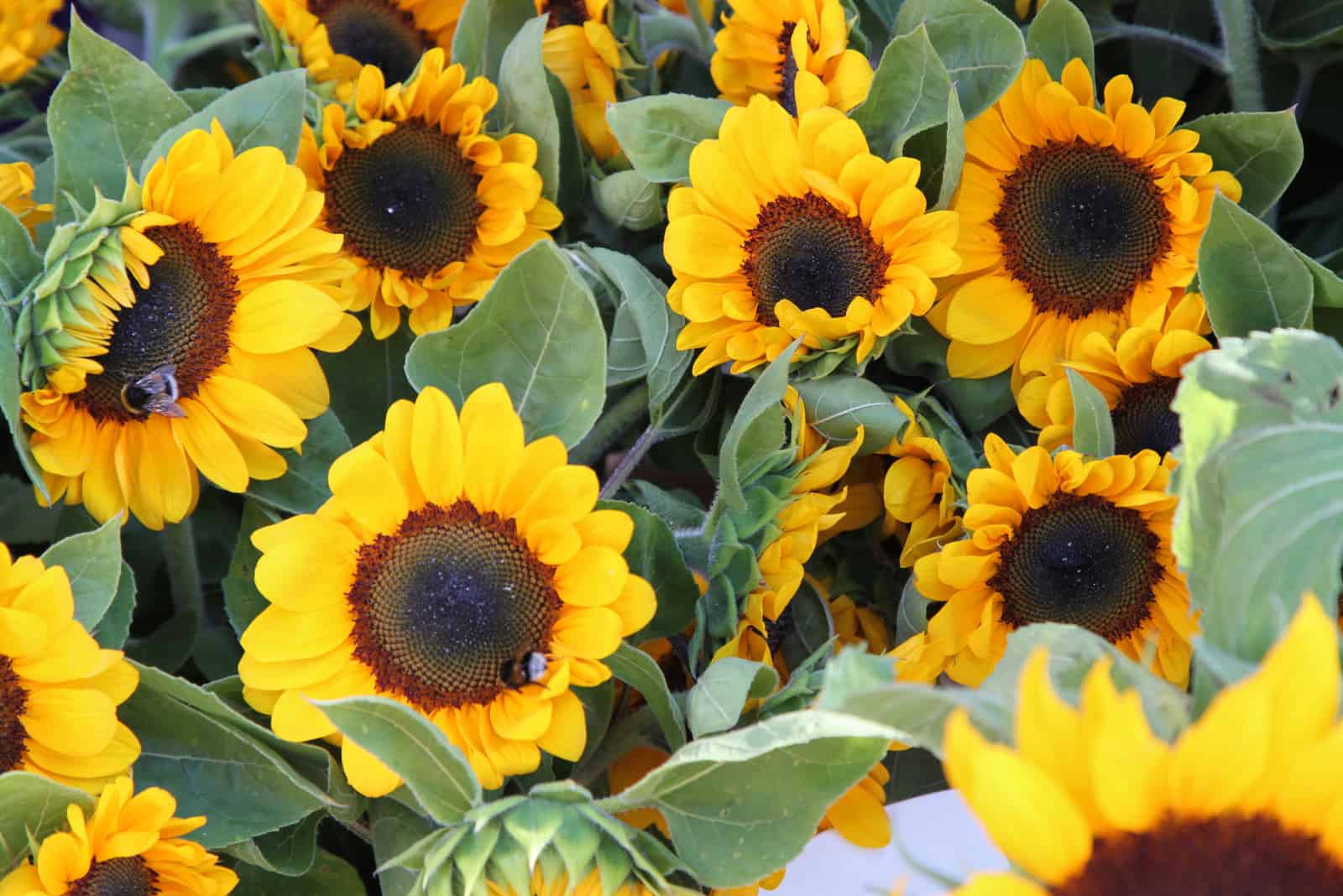Greek mythology has always fascinated me, so imagine my surprise when I found out there’s a whole section about flowers!
That discovery is what inspired me to write this article about ancient Greek flowers, and hopefully I can bring them closer to our era. Below you will find 15 different varieties of breathtaking flowers and learn about their place in Greek history and mythology, as well as some basic care requirements.
So, let’s dive right in!
15 Varieties Of Greek Flowers
The following flowers may not be native to Greece, but were (and are) quite popular. You may remember the Greek myth about the Narcissus flower, but that’s just one story in a vast sea filled with Greek gods and goddesses, heroes and anti-heroes.
Let’s see which myths await us and what gods will move us with their heartbreaking stories!
1. Hyacinth
Hyacinth is a flower popular in many cultures, and you’ll often find it among popular star-shaped flower varieties or when strolling around Athens.
Let’s look into its specifics:
Scientific name: Hyacinthus
Native habitat: The Eastern Mediterranean
Growth rate: Fast-growing plant
Size: 10 inches (25 cm) tall and 4-6 inches (10-15 cm) wide
Toxicity: Toxic
Even though it’s toxic, hyacinth is beloved by many gardeners around the world due to its cluster of star-like flowers that come in shades of blue, purple, lavender, pink, white, red, and yellow.
They adorn your garden with their beautiful flower heads in spring as long as they are planted in a spot with at least six hours of sunlight each day. Also, remember to water them when the topsoil is dry, plant them in well-draining soil, and amend it with some compost to add some organic material and improve drainage.
Greek mythology tells a story about Hyacinthus, a Spartan prince who was a lover of the sun god Apollo and admired by many others, including Zephyrus, the god of the West wind, Boreas, the god of North wind, and Thamyris, a mortal; yet Hyacinthus chose Apollo.
The sun god taught him many things, and one day they were competing to see who could throw the discus the farthest. Apollo threw the discus far away, and Hyacinthus wanted to catch it, but the discus bounced off the ground and hit Hyacinthus in the head. An alternative myth tells that Zephyrus was jealous and intentionally blew the discus, killing the young prince.
The Spartan died in Apollo’s arms, and the god created a flower from his blood known as Hyacinth.
2. Red Anemone
This red flower tells another heart-breaking story, but let’s first learn about its general specifics:
Scientific name: Anemone
Native habitat: Native to all temperate and subtropical regions, except Antarctica and Australia
Growth rate: Slow to moderate growth rate
Size: Can be 6 inches (15 cm) or 4 feet (120 cm) tall and 2-3 feet (60-90 cm) wide, depending on the species
Toxicity: Toxic
The Anemone is found on the list of poisonous plants, but our love for the flowers and myths of ancient Greece is stronger than any venom!
Plant this flower in a fertile and well-draining substrate, water it deeply with an inch (2.5 cm) of water weekly if there’s no rainfall, and ensure it’s not exposed to too much sunlight because it loves partial shade.
Anemone is a Greek word for windflower, and this plant tells the story of the death of Adonis, who was loved by the goddess of love, Aphrodite, and the queen of the Underworld, Persephone. One day, Adonis was attacked by a wild boar, and when Aphrodite heard his cries she rushed to him, only to find him dying.
The myth says that red anemones grew from the place stained by Adonis’ blood, whereas another version claims that white anemones turned red once the droplets of the young man’s blood touched their gentle, pale petals.
3. Saffron Crocus
The lavender-colored crown of the crocus reminds us of universal beauty and the myth tells a story of faithful love.
Here is the basic information about this flower:
Scientific name: Crocus sativus
Native habitat: Greece and the Middle East
Growth rate: Fast grower
Size: 4 inches (10 cm) tall
Toxicity: Toxic
This flower enjoys full sun conditions and you only have to water it if there hasn’t been rain for 3-5 days during its growing season. Plant it in a substrate with good drainage, such as sandy loam, and only fertilize it once a year.
There are two myths about Crocus, and the first one is the same as the one about Hyacinthus, only instead of Apollo and Hyacinthus, the lovers were Hermes and Crocus. Crocus was killed by a discus Hermes threw, so the herald of gods turned him into a flower and the three droplets of Crocus’ blood became the stains on the crocus flower.
Another legend speaks of love between the mortal Crocus and the nymphs, Smilax. The gods were infuriated by their love and turned Crocus into a flower and Smilax into bindweed.
4. Daffodil
The myth about daffodils, or rather Narcissus, is well-known to us all, but let’s look at the general info about this flower and then learn more about the story as it unfolds:
Scientific name: Narcissus
Native habitat: North Europe
Growth rate: Fast-growing
Size: 2 inches (5 cm) or 2 feet (60 cm); it all depends on the species
Toxicity: Toxic
Daffodils can be white or yellow with white, yellow, orange, or pink trumpets, and can be found among many popular French flowers . They need well-draining soil and full sun exposure, frequent watering during the growing season, and no water during dormancy, and that’s it! They’ll be ready to flower before you know it.
In Greek mythology, Narcissus was a mortal whose looks made even the gods jealous. One day, a nymph called Echo fell in love with him, but after she gathered the courage to express her love he rejected her crudely. Echo ran to the forest and slowly withered away, eventually turning to rocks repeating the passers-by words.
The revenge god, Nemesis, made Narcissus fall in love with his reflection in the pond. He was so mesmerized by his looks that he lost balance and drowned in the water, and in the place where Narcissus gazed at his mirror image, a flower grew, symbolizing self-centeredness and stony-heartedness.
5. Peony
Peonies aren’t only popular in Greece, but all over the world, and you can find them growing among many Italian flowers .
These are the specifics:
Scientific name: Peaonia
Native habitat: Western part of North America, Europe, and Asia
Growth rate: Slow grower
Size: Reaches a height and width of about 3 feet (90 cm)
Toxicity: Toxic
Peonies’ irresistible and vividly white, cream, pink, or red blossoms will decorate your garden in spring and summer, and can set a Victorian or Greek ambiance so perfectly that you won’t be able to set aside Austin’s novels or Ovid’s Metamorphoses!
It needs a fertile and well-draining growing medium, plenty of sunlight, and moist soil, which you can achieve by watering it with an inch (2.5 cm) of water each week. These conditions will help your peony go through all growth stages successfully.
There are two myths surrounding peonies. The first tells the story of Paeon, a student of the healing god Asclepius. One day, the god of the Underworld, Hades, was wounded by Hercules’ arrow, and because gods aren’t used to feeling any pain he went to Mount Olympus looking for Asclepius.
He couldn’t find him, so he turned to the next best thing, Paeon, who managed to heal him with a liquid he derived from the roots of peonies. Asclepius behaved as gods do and wanted to kill Paeon, but Zeus stopped him by turning Paeon into a flower.
The other myth speaks of the dangers of beauty and love. There was a nymph, Paeonia, whose charm, beauty, and elegance astounded Apollo. However, he was involved with Aphrodite (Hephaestus’ wife), and she begrudged him that and turned Paeonia into a flower.
She of all goddesses should understand, right!?
6. Larkspur
This blue flower is not a creeping bougainvillea you might expect to see when visiting Greek islands like Santorini and Crete, but it still has many charms.
Below is the main info about it:
Scientific name: Delphinium
Native habitat: Native all over Northern Hemisphere
Growth rate: Moderate growth rate
Size: 3-4 feet (90-120 cm) tall and 1 feet (30 cm) wide
Toxicity: Toxic
Even though it’s toxic, larkspur still decorates many gardens with its pink, purple, and indigo flowers.
It prefers full sun or partial shade if the temperatures are outrageous, enjoys loose, light, and well-draining substrates, and being watered once or twice a week. Give it an inch (2.5) of water, but adjust the amount based on rainfall.
The myth of larkspur is darker than the ones we’ve already told. After Achillies had fallen in the Battle of Troy, his mother asked that his armor be given to the bravest warrior, and the decision was brought down to two men, Ajax and Ulysses.
The Greeks decided that the armor was rightfully Ulysses’, and Ajax went mad with rage; he committed suicide by throwing himself on his sword, and in the place where his blood had poured, delicate larkspur flowers grew.
7. Orchid
The next plants on our list are orchids. They may look charming and luxurious, but Greek mythology tells a different story…
Before revealing it to you, we’ll first introduce some basics of this flower:
Scientific name: Orchidaceae
Native habitat: Tropics of Australia and Asia
Growth rate: Slow growth rate
Size: 8 inches to 3 feet (20-90 cm) tall and 1 foot (30 cm) wide
Toxicity: Non-toxic
From spring to fall, these red, orange, yellow, blue, green, purple, pink, or white flowers will be the most beautiful room decorations!.
Don’t expose them to direct sunlight as it can burn and harm them. Also, you can simply plant them in an orchid mix and change it yearly to ensure proper nutrition for your plant (and also relieve yourself of the tedious work during fertilization). Finally, you should water your plant weekly during winter or twice a week when the weather gets warm.
Orchids are pretty delicate, so you might end up in a situation where you ask yourself: “ Why is my orchid dying?” The answers are usually improper watering, lighting, temperature, or fertilization.
This flower is sensitive, but the Greek myth about it is anything but that. Oral tradition speaks of a demi-god Orchis, who tried to rape a priestess during the Dionysia (a celebration that honors Dionysus, the god of fertility, wine, and pleasure).
In return he was dismembered by wild beasts, and orchids grew from the soil where his severed body fell. Orchids’ lavish flower heads symbolize Orchis’ beauty, while the two tubers represent the sin he committed.
Greeks believed that the tubers had aphrodisiac properties and that they could affect the sex of the unborn baby (the child would be a boy or a girl depending on whether the father ate large tubers or the mother ate small ones).
8. Carnation
Carnations can survive in a vase for ages, so it’s no wonder Greeks (and every other nation in the world) loves them!
Let’s look into its specifics more closely:
Scientific name: Dianthus caryophyllus
Native habitat: The Mediterranean
Growth rate: Slow-growing plant
Size: 12-30 inches (30-75 cm) tall
Toxicity: Toxic
The colors of this flower are simply stunning! It can be white, pink, yellow, red, or scarlet, and even appear as a combination of all these colors to surprise us!
Plant them in a sunny spot outside and ensure that the soil is fertile and well-draining, water the flowers once the topsoil is dry (which should be at least once a week), and your garden will be swarming with carnation flowers in late spring.
There are many contrasting stories about the origin of the carnation, and we couldn’t settle on just one. The first version is surprisingly not bloody, gruesome, or heartbreaking (probably the only such myth), but it does involve a strong feeling: jealousy.
Hera’s flower was a lily, and Zeus was jealous because he didn’t have his own flower so he threw a lightning bolt at it. Thessaly and carnations, flowers equally elegant and beautiful as lilies, then appeared.
The other myth talks of the hunting goddess, Artemis, and her unsuccessful hunt. She blamed the shepherd who played music on his flute for her failure, and popped his eyes. However, she is not a cold-hearted goddess and soon regretted her actions, and red carnations appeared where the eyes fell.
9. Iris
The Greek story about Iris you’re about to hear is quite lovely, and there’s no sign (or scent) of blood anywhere!
Let’s learn more about irises before we continue:
Scientific name: Iris
Native habitat: North Africa, Western Asia, and Europe
Growth rate: Moderate
Size: Approximately 3 feet (90 cm) tall
Toxicity: Toxic
Irises are pretty colorful, and you can choose which color you want your garden to be adorned with; white, pink, red, orange, yellow, blue, or even black.
Keep them in a place where they can get at least six hours of sunlight each day, but if the temperatures rise significantly you should introduce some shade to protect them. They prefer fertile and well-draining planting mediums and regular watering at least once a week (although you should always check the soil and irrigate accordingly).
Iris was the goddess of the rainbow and a messenger for Zeus and Hera when they wanted to communicate with Earth. It was believed she used the rainbow as a bridge that connected Earth and the heavens, or that the rainbow was her cloak.
The myth stuck and found its way into Greek tradition, so it’s not surprising to see purple irises planted on graves because they’re believed to encourage the rainbow goddess to take souls to heaven.
10. Lily
Lilies are popular flowers in Spain , but you can also see them in Greece quite often. They have an interesting mythological background.
Here you can read more about its general specifics:
Scientific name: Lilium
Native habitat: Temperate regions of the Northern Hemisphere
Growth rate: Slow to moderate growth rate
Size: 2-6 feet (60-180 cm), depending on the type
Toxicity: Toxic
Lilies show their various colors from summer to fall, although it depends on the variety. They love the sun and won’t produce their beautiful flowers if they don’t get at least six hours of sunlight a day. Plant them in a nutrient-rich, well-draining substrate and water them whenever there’s no rain to give them their required 1 inch (2.5 cm) of water per week.
The lily has a powerful story behind it, and it all starts with Zeus’ infidelity. He seduced a young (mortal, may we add) woman who bore him a son, Hercules. The thunder god wanted to bring his son closer to divinity, so he thought of an idea of how to get Hera to nurse his son.
He put her to sleep and brought Hercules to feed on her milk. However, the goddess woke up and pushed away the baby with such force that the milk continued to leak. The spilled milk was said to have transformed into the Milky Way, and the drops that fell on the Earth turned to lilies.
11. Gladiolus
The gladiolus is a lovely flower that goes quite well with hyacinths, although their origin stories differ. The myth about the gladiolus revolves around greed rather than love.
But first, let’s learn more about this plant in general:
Scientific name: Gladiolus
Native habitat: Africa, Arabian Peninsula, and the Mediterranean
Growth rate: Slow growers
Size: 2-5 feet (0.6-1.5 m) tall
Toxicity: Toxic
Gladiolus flowers come in various shades, and you can rest assured there’s a color for everyone whether you prefer green, yellow, pink, red, or white blooms.
You should grow them in a fertile substrate with good drainage, expose them to full sun, and water them so they can get an inch (2.5 cm) of water each week.
The story of gladiolus begins with the goddess of the harvest, Demeter. She enjoyed the woods of Thessaly, but there was a greedy and godless man, Erysichthon, who cut and took the trees from the sacred place. God-fearing men tried to stop him, but Erysichthon beheaded a man, and Demeter created the tiny, sword-shaped gladiolus flowers from his blood.
But the story doesn’t end there. The goddess didn’t wait to enact her revenge, and she inflicted him with famine. Nothing could satisfy his hunger, so he ended up selling his daughter to buy more food. However, nothing helped and he eventually devoured himself.
12. Poppy
The poppy is another flower connected to the goddess Demeter, but let us first look into its specifics:
Scientific name: Papaver
Native habitat: Eurasia and North Africa
Growth rate: Fast growth rate
Size: 1-1.2 feet (30-35 cm)
Toxicity: Toxic
Poppies bloom in mid-to-late spring from April to June, and even though we usually see a picture of a single red flower in a wheat field, poppies can actually be any shade between red, pink, white, and purple.
Taking care of it is fairly easy. Ensure it gets at least six to eight hours of sunlight per day, plant it in well-draining soil, and water it every once in a while if you don’t live in a climate with a lot of rain.
Poppies have been associated with sleep from the beginning of time, so it’s no wonder they are often related to Greek gods: Hypnos, the god of sleep, Morpheus, the god of dreams, and Thanatos, the god of death.
However, it is said that it was actually created for the goddess Demeter (or by her, the myths aren’t always unanimous) to help her sleep after her daughter Persephone was abducted. The story later says that poppies sprang from below her feet whenever she took a step.
13. Rose
Another flower that appears from normal bodily movements (or, in this case, functions) is the rose. We all love getting rose bouquets, so it’s good to know how long can roses last without water and how to extend their shelf life (the short version is to change the water regularly, don’t expose them to too much sunlight, and give them flower food or sugar).
Here is some general information about roses:
Scientific name: Rosa
Native habitat: Asia, North America, Europe, and northwestern regions of Africa
Growth rate: Fast growers
Size: The smallest rose grows up to 6-12 inches (15-30 cm), and the largest one up to 20 feet (6 m)
Toxicity: Non-toxic
Give your roses approximately six hours of light per day (preferably in the morning), plant them in nutrient-rich, humus-amended, well-draining soil, and give them 4-5 gallons (15-19 l) of water each week.
There are two Greek myths about roses. The first one gives the goddess Aphrodite the lead role. It is said that she had found her lover, Adonis, mortally wounded by a wild boar. She cried, and as her tears mixed with his blood, a red rose bush sprang from the soil.
Another story claims that roses fell from the mouth of the goddess of flowers, Chloris, when she spoke.
There’s another myth concerning the existence of roses. It claims that the goddess Chloris came upon the lifeless body of a mesmerizingly gorgeous nymph, and struck by her beauty, she transformed her into a flower.
Other gods have also made their contributions: Aphrodite adorned the flower with beauty, Dionysus gave her nectar which was responsible for the rose’s sweet fragrance, Zephyrus blew the wind and cleared away the sky, and Apollo allowed the sun to shine and the flower to bloom.
14. Bay Laurel
You might use laurel in your cooking or remember it from films featuring Romans and gladiators, but there’s a special place for this plant in Greek history.
Before we get to that, let’s see what’s this flower all about:
Scientific name: Laurus nobilis
Native habitat: The Mediterranean
Growth rate: Slow grower
Size: It can grow up to 20 feet (6 m)
Toxicity: Mildly toxic to pets
Pale yellow blooms of bay laurel appear in late spring or early summer, but we usually cultivate it for its leaves. It needs full sun, but you can keep it in partial shade if the temperatures are high. This plant is not demanding, and you can grow it in any type of soil as long as it has good drainage.
Finally, laurels cannot stand wet growing substrates, so water it only when the soil’s top two inches (5 cm) are dry.
The myth of laurel is pretty common, and it involves the sun god Apollo and a Naiad nymph, Daphne. In the tale, Apollo ridiculed Eros’ archery abilities so the god of love got even with him by shooting him with an arrow that filled him with a voracious desire of Daphne. In contrast, the nymph was hit by an arrow filling her with loathing towards all romantic things.
The god chased the nymph, and when she got tired of running away she called to her father, the river god Peneus, and he turned his daughter into a laurel.
Apollo cherished the tree and carried a laurel crown. The myth says that he also made the tree evergreen, granting Daphne immortality.
15. Sunflower
We don’t usually connect sunflowers with Greece, but they hold an interesting place in Greek history.
There are its basic specifics:
Scientific name: Helianthus annuus
Native habitat: Mexico and Central and the southern USA
Growth rate: Fast grower
Size: It can grow up to 3-15 feet (0.9-4.5 m)
Toxicity: Non-toxic
Sunflowers bloom in spring and fall, and if you can’t find room for this flower you can always grow it with sunflower companion plants like tomatoes, cucumbers, basil, lavender, etc.
It obviously needs as much sunlight as it can get (it’s not called sunflower just because of its looks) and a well-draining medium with plenty of nutrients and organic material. Water this plant once a week with an inch (2.5 cm) of water if there is no rain, and watch out for soil fertility; feel free to add some compost or a diluted fertilizer from time to time.
The myth begins with Clytie, a water nymph head over heels in love with Helios, a god who drew the sun with his chariot. However, her love was not reciprocated as Helios was in love with the Babylonian princess Leucothoe.
Clytie couldn’t bear to be apart from Helios, so she reported Leucothoe to her father, Orchamus, who couldn’t stand such shame and buried his daughter alive. But even after Leucothoe’s death, Helios didn’t turn to Clytie; if anything, he scorned her.
Clytie, unable to accept it, sat naked on the ground without food or water and followed the Sun with her gaze. After nine days she turned into a sunflower, still turning and following the sun.
Q&A Corner
You now know many things about popular Greek flowers and their mythology, but there are still some things that need clarification.
This section brings you some common questions and answers about the flowers of Greece.
What flower represents Greece?
The flower that represents Greece is the laurel. It is the plant with which Apollo adorned himself so that he could always be with Daphne, a nymph he was in love with.
The crown of laurel was also given to the winner of the Pythian Games, held to honor Apollo.
What is a popular flower to give on Mother’s Day in Greece?
A traditional Mother’s Day flower in Greece is the chrysanthemum. The Greeks didn’t really celebrate mother’s day, but they did have a holiday to honor Rhea, who was the mother of many gods from Greek myths.
However, roses, carnations, and other popular flowers are also seen as welcoming gifts, and you can never go wrong by gifting flowers.
Closing Thoughts
This article revealed some of the most popular Greek flowers and their mythological stories. Myths offer many causes for their creation, such as love, grief, honor, and protection.
We also included concise care guides just to show that these flowers aren’t difficult to grow and that you can have your own mythological garden in no time.
Happy planting, and until next time!

